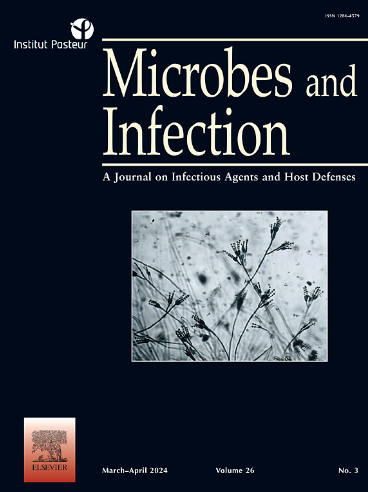Gingivitis- and periodontitis-associated microbiota in bovine deciduous incisor teeth – A preliminary study
IF 2.7
4区 医学
Q3 IMMUNOLOGY
引用次数: 0
Abstract
As ruminants are frequently affected by periodontal diseases, understanding their microbial communities is crucial. In this pilot study, we analyzed subgingival biofilm samples of young cattle across different states: clinically healthy (n = 5), gingivitis (n = 5), and periodontitis (n = 5) using 16S rRNA gene sequencing and co-occurrence network analysis. The findings revealed that Proteobacteria was the predominant phylum across all conditions, with Fusobacteriota constituting 27.6 % of the microbiota in periodontitis-affected sites. In healthy sites, Moraxella (21.11 %), Neisseria (13.16 %), and Lautropia (7.69 %) were the predominant genera; in gingivitis-affected sites, the leading genera were Neisseria (23.65 %), Moraxella (18.95 %), and Conchiformibius (10.79 %); and in periodontitis sites, Caviibacter (19.78 %), Moraxella (16.13 %), and Fusobacterium (7.56 %) were most prevalent. Richness and dissimilarity analyses did not show significant differences across the clinical states, but differences were found between gingivitis and periodontitis sites (p = 0.01) in diversity. The co-occurrence networks highlighted significant variances in the central phyla across the phenotypes, with a higher number of positive interactions observed in periodontitis-affected sites. Consequently, this study demonstrated that the microbiota associated with periodontitis in young cattle exhibits greater diversity compared to gingivitis. Notably, in the deciduous dentition of cattle, the genera Caviibacter and Moraxella are pivotal in the context of periodontitis and periodontal health, respectively.
牛乳牙门牙牙龈炎和牙周炎相关微生物群的初步研究。
由于反刍动物经常受到牙周病的影响,了解它们的微生物群落至关重要。在这项初步研究中,我们使用16S rRNA基因测序和共现网络分析了不同状态的小牛牙龈下生物膜样本:临床健康(n=5)、牙龈炎(n=5)和牙周炎(n=5)。结果显示变形菌门是所有条件下的优势菌门,其中梭菌门占牙周炎感染部位微生物群的27.6%。健康地点莫拉氏菌(21.11%)、奈瑟氏菌(13.16%)和劳氏菌(7.69%)为优势属;在牙龈炎感染部位,主要属为奈瑟菌(23.65%)、莫拉菌(18.95%)和甲虫菌(10.79%);牙周炎部位以Caviibacter(19.78%)、Moraxella(16.13%)和Fusobacterium(7.56%)为主。丰富度和不相似度分析没有显示不同临床状态的显著差异,但牙龈炎和牙周炎部位在多样性上存在差异(p=0.01)。共发生的网络突出了跨表型的中心门的显着差异,在牙周炎感染部位观察到更多的积极相互作用。因此,这项研究表明,与牙龈炎相比,与幼牛牙周炎相关的微生物群表现出更大的多样性。值得注意的是,在牛的乳牙列中,蛀牙杆菌属和莫拉菌属分别在牙周炎和牙周健康方面起着关键作用。
本文章由计算机程序翻译,如有差异,请以英文原文为准。
求助全文
约1分钟内获得全文
求助全文
来源期刊

Microbes and Infection
医学-病毒学
CiteScore
12.60
自引率
1.70%
发文量
90
审稿时长
40 days
期刊介绍:
Microbes and Infection publishes 10 peer-reviewed issues per year in all fields of infection and immunity, covering the different levels of host-microbe interactions, and in particular:
the molecular biology and cell biology of the crosstalk between hosts (human and model organisms) and microbes (viruses, bacteria, parasites and fungi), including molecular virulence and evasion mechanisms.
the immune response to infection, including pathogenesis and host susceptibility.
emerging human infectious diseases.
systems immunology.
molecular epidemiology/genetics of host pathogen interactions.
microbiota and host "interactions".
vaccine development, including novel strategies and adjuvants.
Clinical studies, accounts of clinical trials and biomarker studies in infectious diseases are within the scope of the journal.
Microbes and Infection publishes articles on human pathogens or pathogens of model systems. However, articles on other microbes can be published if they contribute to our understanding of basic mechanisms of host-pathogen interactions. Purely descriptive and preliminary studies are discouraged.
 求助内容:
求助内容: 应助结果提醒方式:
应助结果提醒方式:


